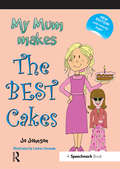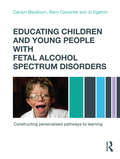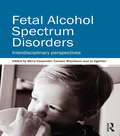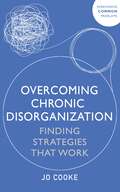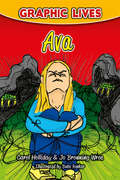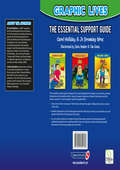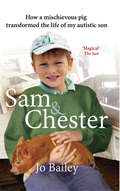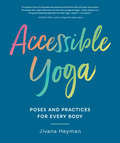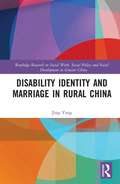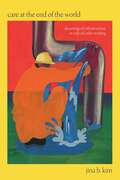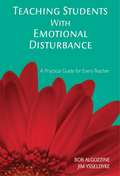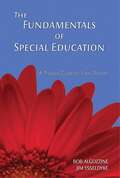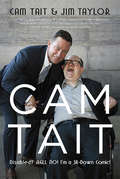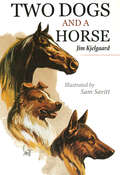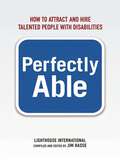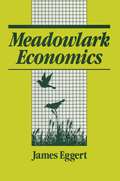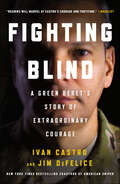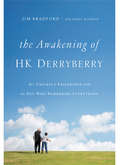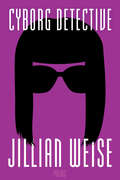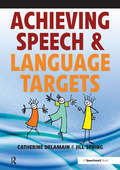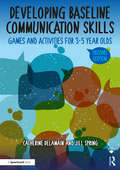- Table View
- List View
My Mum Makes the Best Cakes
by Jo Johnson'How can we talk to our children about Brain Injury?' This is a regularly asked question by parents who have suffered a brain injury and their respective partners. This book has been designed so that children between five and eight can read it independently. However, ideally it should be used with an adult to facilitate discussion about all aspects of family life and to enhance general emotional wellbeing. This book deliberately makes brain injury one of many things going on for this small group of children because for most children it is only one of many issues in their family life. This story is intended to emphasise that all families are different, with their own strengths and weaknesses and different experiences. Brain injury is another experience that some people encounter and others do not. 'My Mum makes the Best Cakes' should prove to be a great reassurance and comfort for children coping with a parent's brain injury. The book presents situations in which brain injured people can be angry, forgetful or unreasonable and shows that it is not the fault of either parent or child and children should not blame themselves. It also demonstrates the positive aspects of life with a brain injured parent and the enjoyable times that can be spent together'. Headway: The Brain Injury Association. "This book has proved to be a very useful support mechanism for service users and families in the Brain Injury Rehabilitation Trust. We are sure that this will continue to be the case, especially with the inclusion of new activity pages." (Professor Michael Oddy, Director of Clinical Services Brain Injury Rehabilitation Trust).
Shrinking the Smirch: A Practical Approach to Living with Long Term Health Conditions
by Jo JohnsonShrinking the smirch is a unique workbook for anybody who is living with a long term physical or psychological condition including MS, Parkinson's, brain injury, epilepsy, chronic fatigue, epilepsy, stroke, cancer, depression, eating disorders, trauma or anxiety. The workbook: asks the reader to think about their symptoms as something external to them - a smirch. A smirch is an annoying little imaginary creature who seeks to make humans sad and unhealthy. It helps you work out what your smirch makes you think, feel and do and create an image or description of your own smirch. It includes twenty practical ways to shrink your smirch ideas, based on psychological approaches that have been proven to work including narrative therapy, CBT. ACT, systemic and solution focused models as well as mindfulness and positive psychological. This book offers a dynamic approach to managing mental and physical health challenges. Written in an accessible but unpatronising manner with marvellous pictures and some positive humour make it an easy read and will be a very useful resource for individuals with health conditions as well as therapists, teachers, life coaches and health professionals. "Reading this book has helped me so much than I thought possible. It's ideas can be used to help so many different situations". (Annabel). Suffered a major bereavement.
Shrinking the Smirch: The Young People's Edition
by Jo Johnson'Shrinking the Smirch: The Young People's Edition' is a workbook to help young people manage stress, gain confidence, resist peer pressure and stay healthy. This book helps young people cope with the usual challenges of being a young adults including anxiety, peer pressure, exam stress, bullying, social media, etc. and is also appropriate for clinical conditions such as panic, eating problems, self harm and low mood. This resource is about the mind, what goes on in your head and coping with all the pressure and challenges young people have to face at home and school. This unique workbook for teenagers asks you to pretend these tricky thoughts and feelings are coming from a smirch, an unkind imaginary friend, a mind bully who wants to pull you into the pit of despair. This resource gives a lot of ideas about how you can beat this mind bully and cope better with all the thoughts and feelings that make you anxious, lonely and upset. It has been written with the help of a diverse group of young people who have shared their stories so you can see you are not alone and that there are things you can do to make life feel better. Jo Johnson has been working as a neuropsychologist for eighteen years. She worked for two decades within the NHS but now works as an independent consultant teaching and writing for several of the national neurology charities. Her specialist interests include brain injury, dementia and multiple sclerosis. She has written several books to meet the needs of children who have a parent with a neurological diagnosis including 'How to talk to your kids about MS' and 'My parent has a brain injury; a guide for young people'.
Educating Children and Young People with Fetal Alcohol Spectrum Disorders: Constructing Personalised Pathways to Learning
by Barry Carpenter Jo Egerton Carolyn BlackburnThe range of learning difficulties associated with children who have fetal alcohol spectrum disorders (FASDs) has been highlighted as an emerging but little understood area of Special Educational Needs. This engaging, timely, and highly practical book will raise awareness about FASDs and their associated difficulties across the entire education workforce. It provides a range of specialist, practical tried-and-tested teaching and learning strategies, from which teachers and support staff may construct personalised learning plans for students with FASDs, and will help improve outcomes for all their children. It also: explains the impact that FASDs can have on the child’s brain; discusses the overlapping and co-existing disorders, such as ADHD and autism spectrum disorders; shows how to support and empower teachers; provides ready-to-use teaching resources and strategies that can be used directly in the classroom. Informed by the very latest research and written by leading experts in the field, Educating Children and Young People with Fetal Alcohol Spectrum Disorders will prove invaluable for experienced teachers and teaching assistants who are engaging in Continuing Professional Development, as well as newly qualified and training Initial Teacher Training students.
Fetal Alcohol Spectrum Disorders: Interdisciplinary perspectives
by Barry Carpenter Jo Egerton Carolyn BlackburnFetal alcohol spectrum disorders (FASDs) have emerged as a major phenomenon within the education, health, criminal justice and social care systems of many countries, with current prevalence figures suggesting that one in a hundred children and young people have FASDs. In this publication, academics, professionals and families from around the world have shared expertise and insights on FASDs. Their combined interdisciplinary perspective makes an invaluable contribution to how we understand and address the complex social, educational and health needs associated with this growing group of children and young people. Articulating fundamental knowledge, cutting edge initiatives and emerging trends in FASDs, this book provides an evidence base that will enable services to identify and respond to the need for action on FASDs. It recognises that families – natural, foster or adoptive – are at the heart of this process, and that their rich knowledge base, grounded in their lived experience, is crucial. Any education, social care, criminal justice or health professional working with children and young people with FASDs and their families will find this book a seminal and authoritative resource.
Overcoming Chronic Disorganization: Finding Strategies That Work
by Jo CookeAre you always late, do you miss appointments, lose your keys, forget your phone, miss deadlines at work on projects, have to pay penalties on late returns for paying tax?We can all be impacted by chronic disorganization - whether it be because of long term stress, menopause, diagnoses of ADHD and/or autism (to name just a few of the very many reasons). It has nothing to do with being stupid or lazy. Some brains are wired differently, and understanding this is the way forward to allow us to delegate, find strategies and systems in place to manage our day to day lives - whether in our personal or professional lives. Overcoming Chronic Disorganization will help you recognize your behaviours and put systems in place to help day-to-day tasks seem less overwhelming and challenging. It looks at the triggers and symptoms of CD, at the role of ADHD and/or autism, and at their impact on executive function. From this background of better understanding, you will discover strategies for organizing and decluttering, advice on dealing with things like procrastination, and how to develop healthy habits and keep them going. Whether for you or for a loved one, this book is full of actionable points and wise, compassionate support and is the first step on your journey to a calmer and more organized life.
Overcoming Chronic Disorganization: Finding Strategies That Work
by Jo CookeAre you always late, do you miss appointments, lose your keys, forget your phone, miss deadlines at work on projects, have to pay penalties on late returns for paying tax?We can all be impacted by chronic disorganization - whether it be because of long term stress, menopause, diagnoses of ADHD and/or autism (to name just a few of the very many reasons). It has nothing to do with being stupid or lazy. Some brains are wired differently, and understanding this is the way forward to allow us to delegate, find strategies and systems in place to manage our day to day lives - whether in our personal or professional lives. Overcoming Chronic Disorganization will help you recognize your behaviours and put systems in place to help day-to-day tasks seem less overwhelming and challenging. It looks at the triggers and symptoms of CD, at the role of ADHD and/or autism, and at their impact on executive function. From this background of better understanding, you will discover strategies for organizing and decluttering, advice on dealing with things like procrastination, and how to develop healthy habits and keep them going. Whether for you or for a loved one, this book is full of actionable points and wise, compassionate support and is the first step on your journey to a calmer and more organized life.
Graphic Lives: A Graphic Novel for Young Adults Dealing with an Eating Disorder (Graphic Lives)
by Carol Holliday Jo Browning Wroe Angeleen RenkerGraphic Lives is a series of highly engaging graphic novels for young people who may need counselling and psychotherapy. Each book introduces the difficulties faced by a teenage character and follows them as they travel on their therapeutic journey with a skilled and creative therapist. The key aims of these books are: to demystify counselling and psychotherapy so that it is more appealing and accessible to young people; to destigmatise emotional and mental health problems so that young people are better able to accept help; to encourage young people to embark upon their own healing journeys, equipped with the sense that there is a way forward. Sixteen year-olds Ava and Jade are obsessed with food, calories, and staying thin. Pleased with the many compliments they receive they push themselves into anorexia. Ava's mother is alarmed by her daughter's weight loss and forces her into therapy with the school counsellor, Steph. However after only two sessions Steph touches a raw nerve, Ava storms out and refuses to continue. Only when Jade is admitted to hospital does Ava return to therapy, where she begins to understand the causes of her anorexic tendencies.
Graphic Lives: Essential Support Guide (Graphic Lives)
by Carol Holliday Jo Browning WroeGraphic Lives is a series of highly engaging graphic novels for young people who may need counselling and psychotherapy. Each book introduces the difficulties faced by a teenage character and follows them as they travel on their therapeutic journey with a skilled and creative therapist. The key aims of these books are: to demystify counselling and psychotherapy so that it is more appealing and accessible to young people; to destigmatise emotional and mental health problems so that young people are better able to accept help; to encourage young people to embark upon their own healing journeys, equipped with the sense that there is a way forward. The essential support guide, designed to be used alongside the Graphic Lives novels, provides therapists and counsellors with a range of support resources, linked to the stories and the issues covered. For each graphic novel, this guide offers: clear and concise coverage of risk factors and warning signs relating to the issue covered in the story; detailed exploration of each therapeutic session in the story so that you can devise you own sessions that link to the therapy in the story; an up-to-date summary of research around the issue covered in the book along with professional guidance on working with that issue to help you achieve the best possible outcomes for the young people you work with.
Sam and Chester: How a Mischievous Pig Transformed the Life of My Autistic Son
by Jo Bailey-MerrittWhen Sam Bailey-Merritt was just two years old, almost overnight he lost the ability to communicate or function. His mother, Jo, was at a loss as to what to do as she saw her son grow increasingly isolated and begin to suffer from uncontrollable meltdowns. Eventually, Sam was diagnosed with autism.Sam's condition continued to worsen and, just when Jo had all but given up hope of being able to help him, the family went on a day trip to a nearby miniature pig farm. Sam immediately bonded with a tiny ginger piglet called Chester, who stood sad and alone, apart from the rest of the litter. The connection between the boy and the animal was immediate and their unusual friendship blossomed from the moment the family brought Chester home. The tiny pig refused to leave Sam's side - it was as if he knew that Sam needed a friend. And, for the first time in five years, Jo saw her son really laugh.While Sam's confidence grew, Chester grew in a different way: the micro pig that was supposed to become the size of a Cocker Spaniel in fact ballooned to three times that size - with hilarious consequences for the family! Chester has turned Sam's life around. He now has the ability to communicate his feelings, make friends and is caring and kind towards others.Sam and Chester is the heart-warming story of how a teacup-sized ginger pig helped to transform the life of a boy with autism. It is the emotional story of a mother's fight to win back her son.
Accessible Yoga: Poses and Practices for Every Body
by Jivana HeymanThis daring, visionary book revolutionizes yoga practice--and makes it truly accessible to everyone, in every body, at any age, and in any state of health.Yoga practice has so much to offer us physically, emotionally, mentally, and spiritually. But many of us feel discouraged to practice because we see young, slim, flexible, well, and able-bodied people dominating yoga spaces. Yet, yoga is truly a practice for all--conferring enormous benefits to our overall well-being as our bodies change, age, and navigate various health challenges. Jivana Heyman, founder of Accessible Yoga, views yoga as a basic human right--saying we all deserve to practice it in whatever state we find our body or mind. Accessible Yoga offers a simple, clear, and wonderfully adaptable practice for all people regardless of ability, health, and body type. Heyman has spent over twenty years sharing yoga with people of all abilities and backgrounds, and in this book, he shares his knowledge by breaking down complex yoga poses, breathing practices, meditation techniques, and yoga teachings into clearly understandable and practical tools we can use every day, regardless of our limitations or challenges.
Disability Identity and Marriage in Rural China (Routledge Research on Social Work, Social Policy and Social Development in Greater China)
by Jing YangBased on data collected through in-depth fieldwork observation and interviews in Bai Township, this book examines how women with disabilities in rural Southwest China compensate for their disability identity through marriage. As the first book to theorize the married life of rural-based women with different types of disabilities, it provides a more holistic picture of their marital life by tracing the marriage process from mate selection to wedding ceremony, reproduction and role performance. It also generates a substantive theory grounded in the real experiences of women living with disabilities with Jing Yang arguing that these women are not passive victims in the marital process, but active agents who endeavour to minimize the risk of abuse and maximize security and satisfaction in their marriage. By examining the effects of fertility, patriarchy and village society on women with disability, this book will be of huge interest to students and scholars of many disciplines, including disability studies, sociology, social work, women's studies and Chinese culture and society.
Care at the End of the World: Dreaming of Infrastructure in Crip-of-Color Writing
by Jina B. KimIn Care at the End of the World, Jina B. Kim develops what she calls crip-of-color critique, bringing a disability lens to bear on feminist- and queer-of-color literature in the aftermath of 1996 US welfare reform and the subsequent evisceration of social safety nets. She examines literature by contemporary feminist, queer, and disabled writers of color such as Jesmyn Ward, Octavia Butler, Karen Tei Yamashita, Samuel Delany, and Aurora Levins Morales, who each bring disability and dependency to the forefront of their literary freedom dreaming. Kim shows that in their writing, liberation does not take the shape of the unfettered individual or hinge on achieving independence. Instead, liberation emerges by recuperating dependency, cultivating radical interdependency, and recognizing the numerous support systems upon which survival depends. At the same time, Kim demonstrates how theories and narratives of disability can intervene into state-authored myths of resource parasitism, such as the welfare queen. In so doing, she highlights the alternate structures of care these writers envision and their dreams of life organized around reciprocity and mutual support.Duke University Press Scholars of Color First Book Award
Teaching Students with Emotional Disturbance: A Practical Guide for Every Teacher (Practical Approach To Special Education For Every Teacher Ser. #Vol. 11)
by Bob Algozzine Jim YsseldykeValuable insight and sound intervention strategies for addressing the needs of students with social and emotional problems!When a student is inattentive, extremely anxious, or has an outright tantrum in the classroom, ascertaining the exact cause may be difficult, but it is a critical step in reaching and teaching the students who exhibit these behaviors. In Teaching Students With Emotional Disturbance, Ysseldyke and Algozzine show readers how to recognize the cognitive, academic, physical, communicational, and behavioral characteristics of several forms of emotional disturbance and offer specific strategies for responding to anxiety issues, opposition and noncompliance, tantrums, disruptiveness, inattention, task avoidance, and more.Highlights include:* A pretest and posttest to help readers assess their understanding about the origins of social and emotional difficulties and how they are best addressed* Effective interventions and instructional adaptations for students who have emotional problems* Trends and issues currently influencing how students with social and emotional problems are taught* Key vocabulary termsThe authors offer a wealth of information and resources so that teachers can better identify the needs of students with emotional disturbance and help them succeed in the classroom.
The Fundamentals of Special Education: A Practical Guide for Every Teacher (Practical Approach To Special Education For Every Teacher Ser.)
by Bob Algozzine Jim YsseldykeThe busy educator's concise guide to the essentials of special education!In The Fundamentals of Special Education, authors Bob Algozzine and Jim Ysseldyke highlight the major concepts in special education, providing readers with a better understanding of the field, from disability categories and statistics to appropriate learning environments.Including a pretest, posttest, and key vocabulary terms, this practical guide answers the many questions educators have about special education, including: What is "special education" exactly, and why do we have it? How many students receive special education services and who are they? How are students identified for special education services? Where are students with disabilities taught? What is an Individualized Education Plan (IEP)? What roles do general and special education teachers play in addressing the needs of students with disabilities, and how do their responsibilities overlap? How does diversity influence special education? What about students who are gifted and/or talented?This excellent resource outlines a practicable approach to special education in all its many forms so that teachers can be prepared for the challenges they might face in the classroom.
Cam Tait
by Jim Taylor Cam Tait"I have cerebral palsy much like I have blue eyes and have-or should I say had?-brown hair. It is simply a part of who I am. When I speak to groups about my situation I can even joke about it. 'Think of CP as Canada Post,' I tell them. 'My brain sends out signals, and God knows where they wind up.'" Long-time journalist Cam Tait has seen some interesting times on the sports beat-rolling alongside Rick Hansen in the Man in Motion tour, playing in fundraising golf tournaments, and tipping back some cold ones with Wayne Gretzky, to name a few. His personal life hasn't lacked excitement either-memorable moments include parasailing, winning a stand-up (or in his case, sit-down) comedy contest, and helping his grandson take his first steps. But he couldn't have done it without the help of his friends. Tait was born with cerebral palsy, unable to sit up, speak or move his arms and legs. But thanks to a revolutionary form of physical therapy that required a 24/7 commitment from his parents and a team of 116 volunteers, he learned to get around in a wheelchair, move his hands and talk. These turned out to be useful skills for a career of prime interviews, crazy deadlines and pranks. Tait teams up with friend and fellow journalist Jim Taylor, telling his own story with characteristic directness and humour. With a newspaperman's inveterate sense of timing, Tait moves seamlessly from one-liners and tales of debauched hijinks to candid accounts of his depression, career struggles and loss of loved ones. He speaks with eloquence about the importance of giving disabled people the chance to pursue their ambitions, and the value of all the support he's received in achieving his own dreams. In both his career and personal life, he's experienced the power of humour to break down barriers and bring people together-and have a hell of a good time doing it.
Slackjaw
by Jim KnipfelIt wasn't until he was in his early twenties that doctors discovered that Jim Knipfel's nearsightedness was the result of an untreatable rare genetic eye disease known as retinitis pigmentosa, which, they said, would leave him blind within a few short years.
Two Dogs and a Horse
by Jim KjelgaardHere's three of the best short stories from Jim Kjelgaard! Brad was a huge dog and loyal to one man--Jed Fentress. The villagers joked about the 'lion' that walked beside Old Jed; he'd better be careful! When a local man found Old Jed dead on the trail, Brad was a hunted dog! * * * The hill men said nobody could capture that wild horse, and nothing could tame it. Then young crippled Jed Hale did what no other man in the whole valley had done, and the black was Jed's. * * * Johnny raced to the swamp. A gun and Harold had been missing since early morning. Johnny didn't want Harold to do what Johnny might have to do--kill the wounded goose. And what about the goose's companion, a dog?!
Perfectly Able: How to Attract and Hire Talented People with Disabilities
by Jim HasseMore than 22 million of the almost 173 million working-age individuals in the United States have one or more disabilities. Perfectly Ableoffers practical guidance for companies large and small on how to hire and retain talented and motivated people from within this largely untapped pool of potential employees. Illustrated with enlightening personal stories, this one-of-a-kind book provides insight into what it's like to seek employment as an individual with a disability. Readers will discover how to: * Evaluate how suited their workplace environment is for disabled or different employees and what needs to be changed * Improve and sustain their workforce by hiring the best people, regardless of any disability or diversity issue * Effectively recruit, place, and develop individuals with disabilities who can contribute to their company's success * Embrace the differences among their workforce to add value to the organization
Meadowlark Economies: Work and Leisure in the Ecosystem
by Jim EggertFirst Published in 2017. The author shares their feelings about enjoying and preserving the natural environment, yet this book also reveals a conflict in values that the most committed ecologist must face. Such conflict pits the powerful American values of individual freedom and rights against the values of community necessary for sustaining the environment. In publishing this collection of essays, the author hopes to contribute to more enlightened economic analysis and more relevant and effective policies that are good for both the economy and the global ecology.
Fighting Blind: A Green Beret's Story of Extraordinary Courage
by Jim DeFelice Ivan CastroFighting was a practiced routine for Lieutenant Ivan Castro. But when a mortar round struck the rooftop of his sniper’s post in Iraq, he found himself in a battle more difficult than even he could have imagined. The direct hit killed two other soldiers and nearly claimed Castro’s life as well. Mangled by shrapnel and badly burned, Castro was medevac’d to Germany more dead than alive. His lungs were collapsed. He couldn’t hear. One eye had been blown out, the nerve to the other severed.In the weeks and months that followed, Castro would find that physical darkness was nothing compared to the emotional darkness of loss and despair. Desperate for a reason to live, he eventually fought his way back to health through exercise and a single-minded goal: running a marathon. Once he set his course, there was no stopping him. Stubborn to a point that at times bordered on insanity, he managed not only to recover but to return to active duty. Since 2007, he has run over two dozen marathons, including the Boston Marathon in 2013, where he was one of the runners diverted when the bombs exploded.Today, Castro helps prepare soldiers for combat, working exactly as if he were “sighted.” Fighting Blind, this frankly told account of his struggle through adversity, the highs and lows and the always bumpy road in between, is a story of hope and perseverance against the odds: an Unbroken for the present generation.
The Awakening of HK Derryberry: My Unlikely Friendship with the Boy Who Remembers Everything
by Andy Hardin Jim BradfordThe Awakening of HK Derryberry is the inspiring story of how one man was willing to step out of his upper middle-class world into the life of a young, disabled boy with a dismal future. Little did Jim Bradford know the transformational potential of that friendship--for HK and himself. HK Derryberry came into the world with the odds stacked heavily against him. He was taken from his unmarried mother's womb three months prematurely when she was killed in a car wreck. After ninety-six days of seesawing between life and death, HK's grandmother took him home. One Saturday morning Jim Bradford, a successful businessman in his mid-fifties, happens into Mrs. Winner's Chicken and Biscuits and sees a nine-year-old's head pressed down against a black plastic boom box with a crooked antenna and three strips of silver duct tape stretched across the battery cover. He can't help but notice the long, white plastic braces on each of the child's legs. Mr. Bradford learns that HK's grandmother is forced to bring him to the fast-food restaurant where she works, leaving him to sit alone all day at a small table, with only his boom box for company. On subsequent Saturdays Jim feels drawn back to the restaurant to meet with HK and begins spending every weekend with him. Eventually it becomes apparent that buried beneath HK's severe disabilities is one spectacular ability. He is diagnosed with Highly Superior Autobiographical Memory (HSAM), which involves superlative powers of recollection that enable him to remember everything that has happened to him since the age of three. Less than one hundred people have been diagnosed with HSAM, but none of them have the physical disabilities of HK Derryberry.
Cyborg Detective (American Poets Continuum #174)
by Jillian WeiseIn her third collection of poems, Jillian Weise delivers a reckoning to the ableism of the Western Canon. These poems investigate and challenge the ways that nondisabled writers have appropriated disabled bodies, from calling out William Carlos Williams to biohacking Raymond Carver’s “Cathedral” to chronicling the ongoing headlines of violence against disabled women. Part invective, part love poem, Cyborg Detective holds a magnifying glass to the marginalization and fetishization of disabled people while claiming space and pride for the people who already use technology and cybernetic implants every day.
Achieving Speech and Language Targets: A Resource for Individual Education Planning
by Catherine Delamain Jill Spring"Achieving Speech & Language Targets" is a practical resource book for Special Needs Coordinators (SENCOs), teachers, teaching assistants and speech & language therapists who are working with children who have significant language delay and who are in their first year at school. Checklists provide professionals with a shared reference from which both broad special needs areas and specific speech and language targets can be identified. The authors emphasise the crucial role of play in language development and the book offers more than 200 games and activities to help children achieve their targets for each stage using a simple, structured layout. The book offers: advice on how to draw up effective Individual Education Plans (IEPs); checklists which enable the user to identify a child's problems in the areas of: understanding language; using spoken language; and, developing speech sounds; a wide range of games, songs and rhymes to help children achieve specific targets; teaching ideas & targets, key vocabulary lists, and activity areas for each stage; a resources section containing photocopiable activity sheets; games & rhymes; a booklist; techniques used by speech & language therapists to encourage understanding and use of language; and, a dictionary of terms that refer to speech & language. This is an essential tool for busy teaching staff. Many of the activities can take place in the context of the everyday curriculum and include a range of play opportunities designed to make learning interesting and dynamic. Almost all activities can be carried out using equipment that is readily available in early years' classrooms.
Developing Baseline Communication Skills: Games and Activities for 3-5 year olds (The Good Communication Pathway)
by Catherine Delamain Jill SpringDeveloping Baseline Communication Skills is a practical resource designed to fit with baseline assessments in primary school. The second edition of this bestselling resource contains a programme of games and activities to foster personal and social development, and promote language and literacy skills in 3–5 year olds. The book seeks to address language and communication difficulties for children coming into reception class by providing a range of fun and engaging activities. Suitable for whole classes or small groups of children, the activities focus on both personal, social, emotional development as well as language and literacy in areas such as body language, independence, turn taking, listening, speaking and auditory memory. Features include: 200 games and activities which are differentiated for different ages and levels of ability; A clear aim, equipment list and instructions for each activity; Photocopiable templates for ease of use; Supplementary resource sheets including pictures and scripts to use with the activities. Now fully revised and updated in line with current policy and legislation, this book is suitable for young children in any school setting including nurseries, playgroups and reception classes. It also includes material that may be used as an effective part of a speech and language therapy programme in consultation with a therapist. This is a unique manual that will be an essential addition to the materials used by professionals working with young children.
